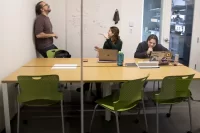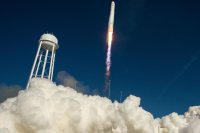
Shortly after 2 p.m. on Monday, as the moon started to do its thing, Sylvia Deschaine, who is the building coordinator in Carnegie Science Hall, knocked on the door of a crowded second-floor classroom, then entered, much to the surprise of prospective students and their families attending an Admission information session.
“Excuse me,” said Deschaine, in the brogue instilled by her birthplace, Maynooth, Ireland. “The eclipse is starting, and it’s a once-in-a-lifetime event. The president of the college is here, so come on and follow me.”
And they did. Admission counselor Jane Ngoc Tran had been leading the session, and she appreciated Deschaine’s spur-of-the-eclipse intervention. “We’re always looking for something new to share with families. We like to go the flow — Bates is a spontaneous community.”
The crowd followed Deschaine (“She got everyone pumped up,” Tran said) outside to the Historic Quad, where an eclipse watch party had drawn a few dozen faculty and staff, including President Clayton Spencer.
Associate Professor of Physics Nathan Lundblad set up a solar telescope, while his colleague Matt Côté, associate professor of chemistry, deployed a homemade viewing device that incorporated an old film camera.
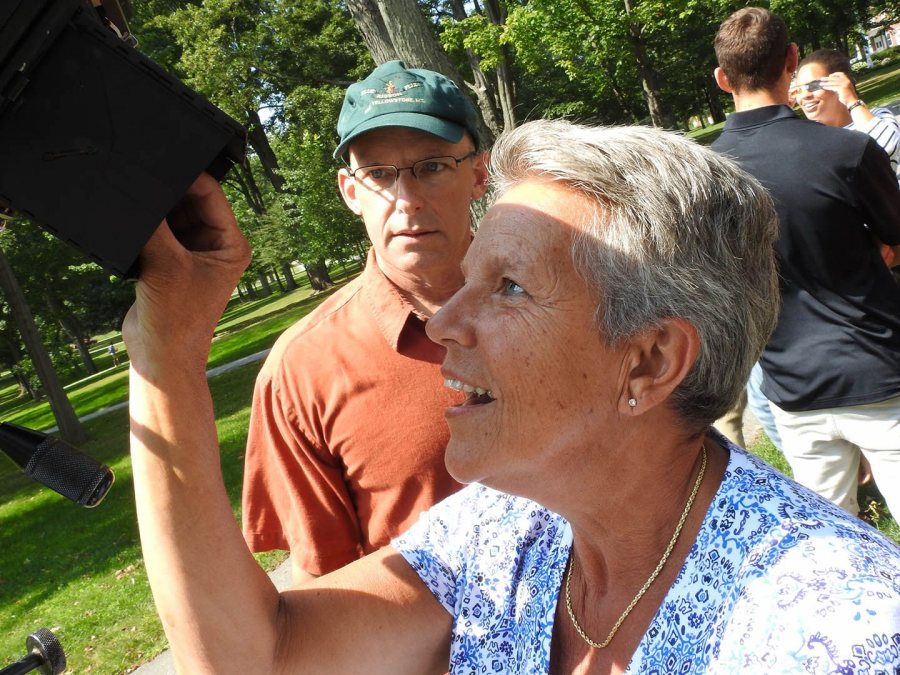
Georgette Dumais, an academic administrative assistant, views the eclipse through an old Speed Graphic camera belonging to Associate Professor of Chemisty Matt Côté, who looks on. (Jay Burns/Bates College)
For students on the traditional summer tour of colleges, different schools can begin to blur. For Bates visitors on Monday, the eclipse made its mark. “We will not forget the Bates tour,” said Meg Alexander, visiting Bates from Concord, Mass., with her daughter, Lucy Hirsch. “This is such a special moment.”
“This is so exciting,” said parent Jody Culcasi of Northbridge, Mass., visiting Bates with her daughter, Maddie, and husband, Pete. “We weren’t expecting to be able to see it.”
Pete Culcasi is a welder for a fabrication shop in Boston, and he was amused that because of the eclipse hoop-la, the world suddenly knew all about the numbering system for eye-protective welding glass.
“Most people never know the numbers. I do only because I order the stuff,” he said. “To hear the number on the news, for people to call you up and ask, ‘Do you have 14?’ — wow. Everyone’s calling for 14, but we don’t use 14. We have up to 12. We use 10, and sometimes 9.”
He’d brought a glass with shade 12. “NASA says that’s safe,” Jody said.
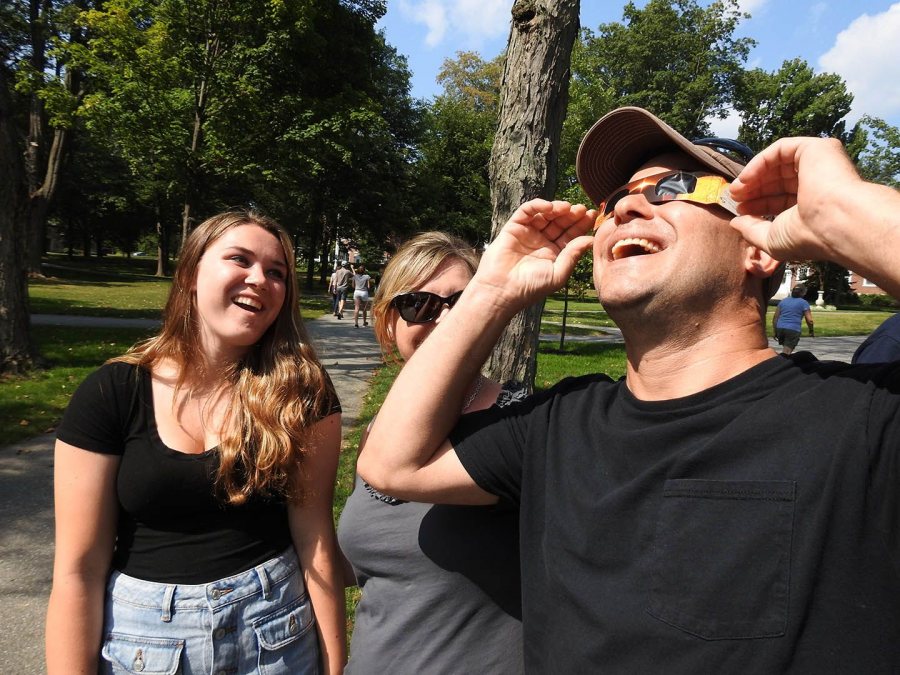
Pete Culcasi of Northbridge, Mass., looks at the eclipse through protective eyeglasses with his daughter, Maddie (left), and wife, Jody. A welder by trade, Pete had also brought protective welder’s glass. (Jay Burns/Bates College)
Côté had rigged the camera, a Graflex Speed Graphic (the familiar large-format style that news photographers used in the mid-1900s) so that the image was displayed, safe for viewing, on the camera’s ground glass viewer.
It had belonged to his late father, an avid amateur photographer who was a longtime professor of wood science and technology at SUNY College of Environmental Science and Forestry.
The night before the eclipse, Côté stumbled upon the camera in his “messy storage area” and “hauled it out to see if I could use it to view the eclipse.”
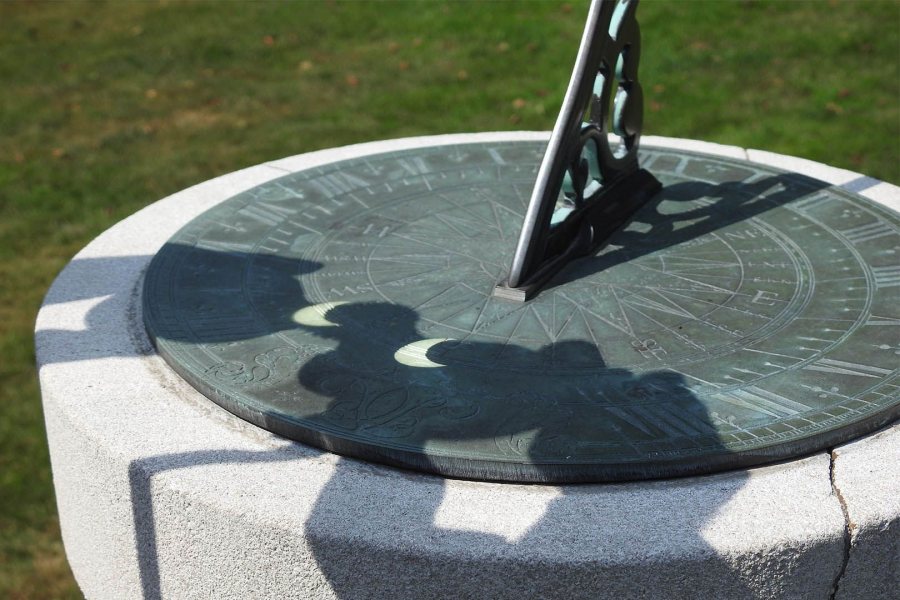
Fun with the sun: The partial eclipse is projected onto the Class of 1932 Sun Dial through a pair of binoculars. (Jay Burns/Bates College)
He could, and it was a popular attraction. Leading up to the 57.6 percent eclipse, a steady stream of viewers took turns looking at the image on the ground glass.
“It was odd to rediscover the camera, right now, after several years,” Côté said. “I thought, ‘This is serendipity.’ It’s neat to be putting to use something from my father.”
